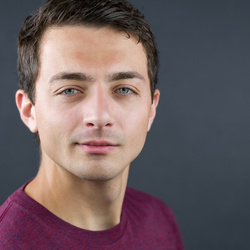Backlighting is a powerful technique that can transform your portraits by adding depth, dimension, and a distinct visual impact. By positioning a light source behind your subject, you can create striking highlights that outline the contours of your subject’s hair and body, making them stand out against the background.
Coming to you from Ed Verosky, this informative video walks you through the various backlighting techniques that can elevate your portrait photography. One of the classic effects discussed is the “halo” effect, where the light creates a soft, glowing outline around your subject’s hair. This technique, which gained popularity in the late 70s and 80s, uses natural or artificial light positioned behind the subject to produce a translucent, ethereal quality. Although considered a bit retro today, this effect can add a unique flair to your portraits, especially if you’re aiming for a nostalgic look.
Verosky also breaks down the use of a “hair light,” a more traditional backlighting method that subtly illuminates the hair, adding separation between the subject and the background. This technique is often employed in a three-point lighting setup, where the hair light, positioned slightly above or to the side of the subject, adds a soft highlight to the hair. This can be done with a small softbox or a bare flash, depending on the desired effect. This method not only enhances the subject’s appearance but also adds a touch of professionalism to your portraits by giving them a polished look.
Another valuable technique covered is the use of a “rim light” or “kicker light,” which emphasizes the edges of your subject. By placing lights behind the subject, slightly off to the side, you can create a narrow highlight around their contours. This adds depth and dimension, making the subject pop against the background. Verosky provides practical examples, such as using strip softboxes to achieve a clean, defined outline, which can be particularly effective in high-contrast portraits like boudoir photography.
The video also touches on creative effects that can be achieved by manipulating backlighting, such as blowing out the edges for a soft, glowing effect or using lens flare for a dreamy, artistic look. These techniques involve intentionally allowing light to wrap around the subject or directly hit the lens, creating an effect that can either be a happy accident or a deliberate stylistic choice. Verosky explains how to control these effects to either enhance your images or avoid unwanted results, depending on the look you’re going for. Check out the video above for the full rundown from Verosky.
If you would like to continue learning about how to light a portrait, be sure to check out "Illuminating The Face: Lighting for Headshots and Portraits With Peter Hurley!"






